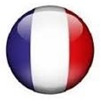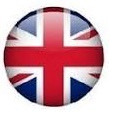 Avec cette Earthcache, nous allons nous intéresser aux faciès de faluns présents à la carrière-musée. Cette ancienne faluinière, a été aménagée par le le Conseil Départemental propriétaire du site ce qui permet aujourd'hui de la découvrir en parcourant un sentier d'interprétation.
Avec cette Earthcache, nous allons nous intéresser aux faciès de faluns présents à la carrière-musée. Cette ancienne faluinière, a été aménagée par le le Conseil Départemental propriétaire du site ce qui permet aujourd'hui de la découvrir en parcourant un sentier d'interprétation.
Ce site constitue un témoin du Miocène moyen. Les intérêts sont multiples ; ils sont à la fois paléontologiques et sédimentologiques. Cette carrière offre à voir tous les faciès qui témoignent des va-et-vient de la mer de faluns au cours du Miocène.
Au Miocène moyen, c'est-à-dire il y a une quinzaine de millions d'années, une mer peu profonde (inférieure à 50m) a envahi le bassin ligérien. Des dépots sédimentaires se sont accumulés. Après le retrait de cette mer (appelée mer des faluns), la plupart des sédiments qu'elle a laissés ont été déblayés par l'érosion, les faluns sont les rares lambeaux qui subsistent, ils témoignent d'une activité biologique riche et variée, sous un climat tropical à subtropical.
Les fronts de taille de la carrière exposent en peu d'espace les principaux types de faluns. Leur superposition et leur variation d'un lieu à l'autre permettent de reconstituer la dynamique d'un littoral.
Deux grands types de de faciès* de faluns en Touraine :
- Faciès pontilevien (de Pontlevay) : dépôts côtiers sableux et coquilliers. Dépôt de rivage typique d'un mer en régression avec des courants forts chargés en sable et coquilles. De nombreux chenaux se forment donnant des stratifications entrecroisées (sables en auges)
- Faciès savignéen (de Savigné-sur-Lathan) : dépôt très calcaire plus profonds riches en Bryozoaires*.
Le front de taille présente également :
- Calcaire lacustre : Issu d'un dépôt continental à l'Eocène. Sa surface est perforé par des Lamellibranches* lithophages après l'arrivée de la mer.
- Sables Roux inférieurs : les courants forts apportent au fur et à mesure des marées, des couches de sables donnant une sédimentation à litage oblique.
- Falun altéré : l'altération du falun par dissulotion des coquilles calcaires au Quaternaire a donné des poches de sables et d'argiles rougeâtres.
*Faciès : Catégorie de roche sédimentaire suivant sa nature, son allure et les fossiles qu'elle contient.
*Les lamellibranches forment la classe Lamellibranchiata de mollusques bivalves (huîtres, moules...) dont le corps est bilatéralement symétrique, comprimé et enfermé dans le manteau et qui forme une coquille dont les parties droite et gauche sont reliées par un charnière sur le dos de l'animal.
*Les bryozoaires (Polyzoa et Ectoprocta) sont des invertébrés coelomates sessiles aquatiques formant des colonies de formes très variées et habitant des milieux marins et d'eau douce. Les bryozoaires forment des colonies ressemblant à des algues ou des mousses.
 With this Earthcache, we are going to take an interest to the facies of faluns present at the quarry-museum. This former faluinière, was fitted out by the Departmental Council, owner of the site, which today makes it possible to discover it by following an interpretive path.
With this Earthcache, we are going to take an interest to the facies of faluns present at the quarry-museum. This former faluinière, was fitted out by the Departmental Council, owner of the site, which today makes it possible to discover it by following an interpretive path.
This site is a witness of the Middle Miocene. The interests are multiple; they are both paleontological and sedimentological. This quarry offers to see all the facies which testify to the comings and goings of the sea of faluns during the Miocene.
The working faces of the quarry display the main types of faluns in a small space. Their superposition and their variation from one place to another make it possible to reconstruct the dynamics of a coastline.
Two main types of facies* of faluns in Touraine:
- Pontilevian facies (from Pontlevay): sandy and shelly coastal deposits. Shore deposit typical of a receding sea with strong currents laden with sand and shells. Many channels are formed giving intersecting stratifications (sands in troughs)
- Savignéen facies (from Savigné-sur-Lathan): very calcareous deposit deeper rich in bryozoans.
The working face also presents:
- Lacustrine limestone: From a continental deposit in the Eocene. Its surface is perforated by lithophagous Lamellibranches after the arrival of the sea.
- Lower Red Sands: the strong currents bring, as the tides go, layers of sand giving sedimentation with oblique bedding.
- Altered falun: the alteration of the falun by dissolution of the calcareous shells in the Quaternary gave pockets of reddish sand and clay.
*Facies : Category of sedimentary rock according to its nature, its appearance and the fossils it contains.
*The lamellibranchs form the class Lamellibranchiata of bivalve molluscs (oysters, mussels...) whose body is bilaterally symmetrical, compressed and enclosed in the mantle and which forms a shell whose right and left parts are connected by a hinge on the back of the animal.
*Bryozoans (Polyzoa and Ectoprocta) are aquatic sessile coelomate invertebrates forming colonies of very varied shapes and inhabiting marine and freshwater environments. Bryozoans form colonies resembling algae or mosses.
Questions pour valider cette earthcache :
D'après vos observations et à l'aide du desciptif,
Questions to validate this earthcache:
Based on your observations and using the description :
Question 0
Joindre à votre log (PAS à vos réponses) une photo de vous ou une partie de vous avec votre GPS, votre GC perso ou tout autre objet de géoocaching aux coordonnées de la cache (sans montrer les réponses !).
Les simples photos de paysage sans objet personnel ou capture d'écran de votre position ne permettent pas de valider cette condition de log.
Cette tâche est obligatoire et autorisée par les guidelines mises à jour en juin 2019.
Attach to your log (NOT to your answers) a photo of you or a part of you with your GPS, your personal GC or any other geocaching object at the posted coordinates (without showing the answers !).
The simple photos of the landscape without a personnal item or screenshot of your position do not validate this log condition.
This task is mandatory and allowed by the guidelines updated in june 2019.
Question 1
Qu'est-ce qu'un faciès ?
What is a facies ?
Approchez-vous du front de taille pour mieux l'observer. Dans quelle couche trouve-t-on le plus de fossiles ?
Approach the working face to observe it better. In which layer are the most fossils found ?
Question 3
Identifiez le type de fossiles le plus abondant.
Identify the most abundant type of fossils.
Question 4
Dessinez un croquis du front de taille sous la zone bleue faisant apparaître les 5 différentes couches (Faciès pontilevien, Faciès savignéen , Calcaire lacustre, Sables roux inférieurs, Falun altéré) que vous pouvez observer face à vous.
Photographiez votre croquis pour me le faire parvenir. Attention, le croquis doit être réalisé de votre main.
Chaque joueur souhaitant loguer cette Earthcache doit envoyer son propre croquis.
!! 1 PSEUDO = 1 CROQUIS !!
Draw a sketch of the outcrop under the blue area showing the 5 different layers (Pontilevian Facies, Savignean Facies, Lacustrine Limestone, Lower Red Sands, Altered Falun) that you can observe in the working face in front of you.
Photograph your sketch to send it to me. Please note, the sketch must be done by hand.
Each player wishing to log this Earthcache must send their own sketch.
!! 1 PSEUDO = 1 SKETCH !!
Envoyez-moi vos propositions de réponses soit via mon profil, soit via la messagerie geocaching.com (Message Center) PUIS loguez cette cache "Found it", je vous contacterai en cas de problème.
Assurez vous de répondre à TOUTES les questions ! La condition principale pour loguer une Earthcache étant de répondre aux questions posées dans le descriptif, tout log "Found it" enregistré sans envoi préalable de vos propositions de réponses sera supprimé. Il en sera de même pour les logs enregistrés sans la photo requise.
Send me your proposals for answers either via my profile or via the geocaching.com messaging (Message Center) THEN log this cache "Found it", I will contact you in case of problem.
Make sure to answer ALL questions ! The main condition to log an Earthcache is to answer the questions asked in the description, any log "Found it" registered without prior submission of your proposals of answers will be deleted. It will be the same for logs saved without the required photo.
